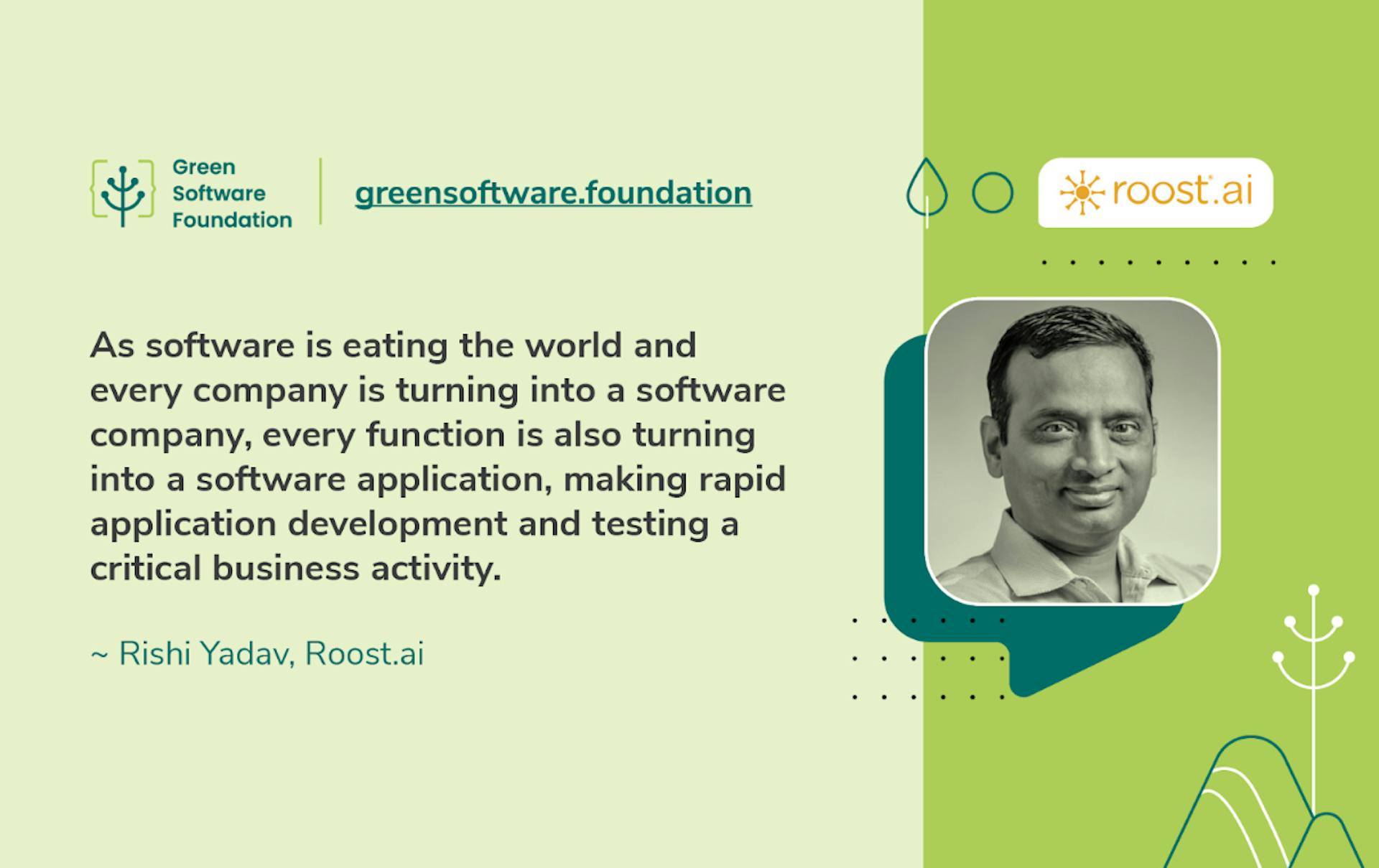Rishi has spent over two decades as a software developer. He has worked for big names such as Netflix and consulted for Cisco & Wells Fargo before venturing into entrepreneurship. Rishi has invested over 15 years in solving complex enterprise data and application development problems. He is a published author with two books on Apache Spark and articles in various leading publications. His passion for solving DevOps challenges led him to start Roost.ai in 2019. He calls the San Francisco Bay Area his home.
Roost is a ChatGPT-driven DevOps platform. Developers love to write scripts and hate to write test cases. Roost eliminates the need for both so developers can focus on writing business code and delivering customer value.
As software is eating the world and every company is turning into a software company, every function is also turning into a software application, making rapid application development and testing a critical business activity. An application lifecycle has roughly three stages: writing code, pushing the application live, and everything in between.
Are you mainly providing the benefits of cost savings and speeding up the time to release?
Yes, we are reducing the time to release, which leads to a cost reduction. But it also means a reduction in computing resources. But the fundamental goal remains to make the release happen fast and decrease the friction in the release phase.
What do sustainability and green software mean to you?
Sustainability within our organization is a much smaller deal. But our products focus on efficient processes, which naturally helps improve sustainability. We reduce energy use by taking the least amount of compute cycles to get a release from development to production. It all works on demand. When a change is ready for testing, these environments wake up, do their job, and then go back to sleep.
We believe green software has to be green at every stage, not only after its deployment. The software has to be designed green, and the process of creating software has to be green; this comes down to the electricity we are using and the steps we take to minimize the use of resources.
Why join the GSF?
When I heard about the Green Software Foundation, I was like, wow, our product is naturally made for it. Sustainability may not be on the top of the agenda of many engineering organizations, but it should be. We should do our part to give it some attention; it’s the right thing to do.
We are close to an inflection point where everybody knows we cannot keep increasing our carbon footprint. In the past, we could afford it, but that is changing now. So, we have to apply a more conscious, mindful approach when developing software.
I have been a software developer for most of my life. But all these years, nobody thought about carbon awareness; it never crossed our minds. It's not that we didn't care about it; we were just not thinking about it. Now, we have an opportunity to change that. With the GSF, we can bring that consciousness to the engineering teams. We can make sure carbon reduction gets on their priority list.
And that is just what the GSF is doing right - it's changing the culture around green software, providing knowledge to developers, and giving them the tools to find solutions.
What more can be done, in your opinion?
Great software engineers are not born but created. They are formed by acquiring and honing great design and development principles. In the same way, organizations need to create a culture where we celebrate carbon awareness and its implementation into the application life cycle.
We can also better set the right incentives for developers and management, ensuring that sustainability is an essential topic in each organization. It's crucial to change the mindset and create more awareness. Then the budgeting needs to follow suit; if we allocate no funding to greening software, we can't expect any results. Change can happen much faster in any organization with a strong push from the top.
This article is licenced under Creative Commons (CC BY 4.0)
